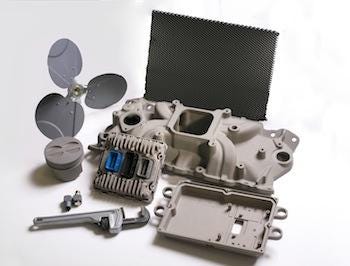March 5, 2012

Coatings in harsh environments already have a tough job protecting metal and plastic components in cars, ships, planes, and industrial machinery. But a combination of globalized markets, more extreme operating requirements, and the desire for a cleaner environment are demanding more from the coatings.
Some manufacturers are combining the product's basic function, whether it's resistance to salt water, chemicals, or extreme temperatures, with additional features such as increased durability, reduced friction, lower cost, or less wasteful application. Some classes of coatings are replacing a competing class in certain applications. In other application areas, new coating types are gaining ground.
Field-applied coatings are used as topcoats on metal structures with tanks or piping exposed to outdoor conditions, such as bridges, oil tankers, or chemical plants. Traditionally, a zinc-rich primer coat was used to protect metal from corrosion, Jerry Witucki, senior coatings specialist for Dow Corning's coatings and composites group, told us. The zinc powder protects the steel via sacrificial oxidation. An epoxy coating is applied to hold down the zinc and provide corrosion protection, followed by a polyurethane topcoat.

"It's possible to cut down the number of coatings and get the same level of protection for less labor cost and downtime," Witucki said. "Siloxane-based coatings have superior weather and chemical resistance. The same zinc-rich primer is covered by a silicone acrylic or silicone epoxy topcoat. These are being used on offshore oil platforms, wind farms, radio towers, transmission lines, and anywhere steel is outside."
Because of industry consolidation, field-applied coating systems have become commoditized, he said. Now coatings suppliers are differentiating their products by incorporating a new benefit or performance enhancement, such as durability, easy cleaning, or chemical resistance. "Historically, the silicones were relegated to niche applications due to cost, but as the price of organic resins increases with the price of oil, siloxanes have become a more attractive option."
One of the fastest-growing coating technologies in industrial maintenance is the silicone hybrid coating, which combines the best of organics and silicones. In particular, polysiloxane hybrids combine silicone with epoxy, acrylic, or urethane. "Polysiloxanes have inherently low viscosity, so there's low solvent requirements. They have good thermal and UV stability, excellent chemical resistance, and excellent compatibility with organics." Their share of the coatings market is still small, but engineers increasingly prefer hybrids, so rapid growth in polysiloxane use is expected.
About the Author(s)
You May Also Like



